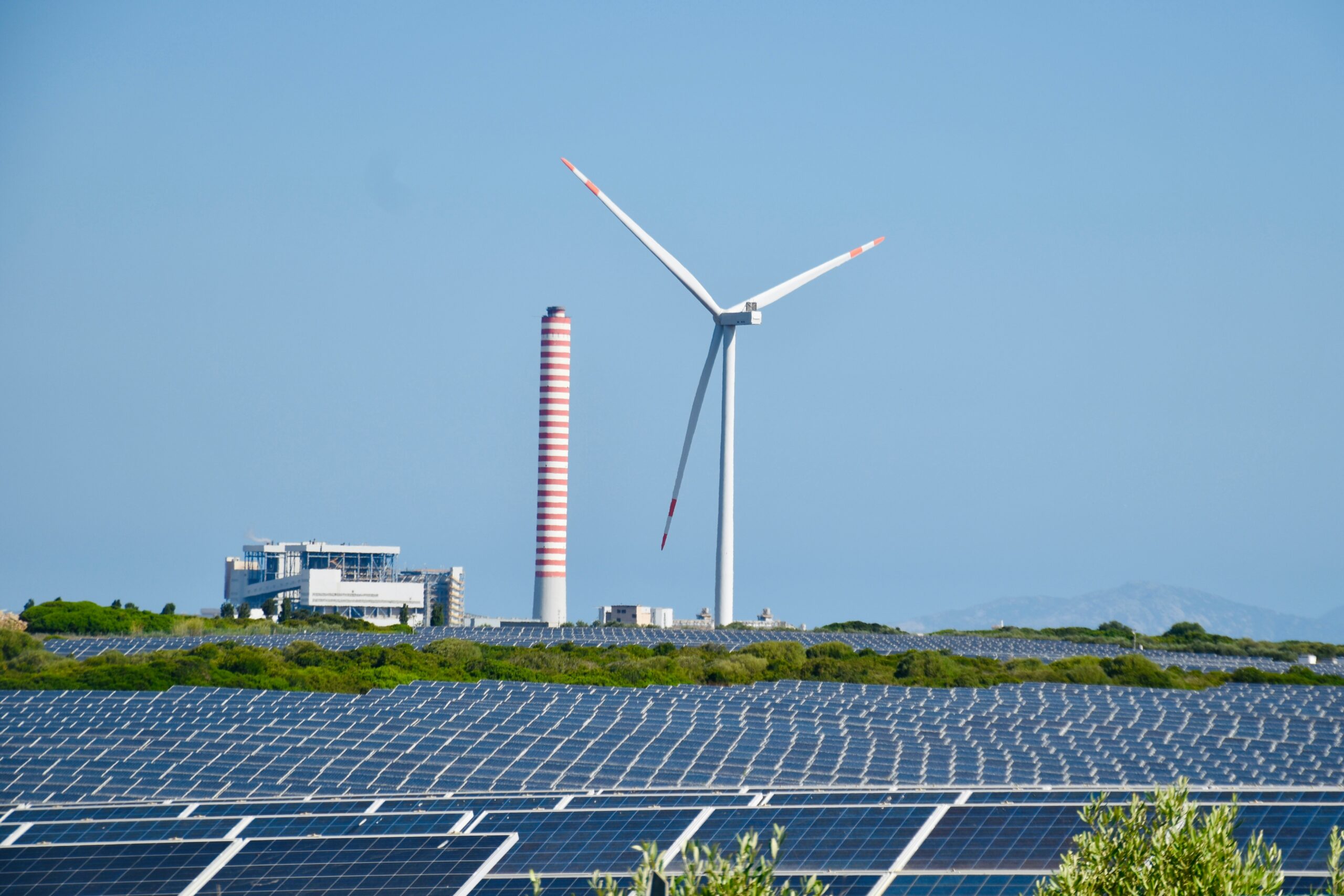The big-tech industry is influencing the energy transition in far more significant ways than many realise: through renewable energy long-term contracts, cloud computing services, by applying machine learning to the management of electricity supply and demand, and, above all, by harvesting — and exploiting — data about that energy.
Major US players such as Amazon, Google, Microsoft, and Meta are actively pursuing climate goals by signing Power Purchase Agreements (PPAs), investing in carbon reduction technologies, and recently pledging to help triple global nuclear energy capacity by 2050 (Source: ESG Today). While the US administration faces increasing political resistance to ESG principles, Big Tech is not slowing down. It is rapidly becoming the private engine behind a cleaner energy future.
Beyond the US Political Backlash, why are big tech businesses leading on Climate Action?
The current US administration is back on environmental, social, and governance (ESG) policies. These rollbacks include changes to climate disclosure rules and relaxed sustainability reporting mandates, potentially slowing national momentum on climate action. However, these regulatory shifts at the federal level have had little impact on corporate decision-making within major technology firms, even among those that broadly supported the Trump administration.
Why are tech giants acting anyway?
Global technology companies operate across jurisdictions, serving international markets where climate expectations are more stringent. In addition to regulatory compliance, they face increasing pressure from institutional investors, customers, and employees who prioritise sustainability. For companies like Amazon, Microsoft, Google, and Meta, climate action is not only a reputational imperative but an operational and technological competition. They recognise that long-term business resilience, investor and employee trust, and global competitiveness now rely on proactive participation in the energy transition and green technology innovation. Driven by external pressure and the internal push from technically skilled, climate-conscious young professionals, tech giants have accelerated their climate commitments, often moving ahead of government directives.
How Tech Giants Are Powering Up with Renewables?
According to the IEA, in 2020, the five largest tech companies secured 7.2 gigawatts (GW) of renewable energy capacity—nearly 30% of all corporate renewable power purchase agreements and approximately 3.5% of global renewable capacity additions that year.
This trend is gaining momentum as tech giants continue to expand their renewable energy portfolios at scale.
![]()
Amazon – the world’s largest corporate renewable energy buyer
For the fifth consecutive year, Amazon has maintained its position as the world’s largest corporate purchaser of renewable energy. As of 2024, the company has more than 500 renewable energy projects across the globe, encompassing wind farms, solar arrays, and battery storage initiatives. These projects are not limited to operational needs; they contribute to expanding the global renewable energy infrastructure, particularly for Amazon Web Services (AWS) data centres and fulfilment networks (Source: ESG Today).
Google – data centres powered by solar at scale
Google continues to pursue its long-term ambition of operating entirely on carbon-free energy, 24 hours a day, seven days a week.
A recent agreement to procure 600 megawatts (MW) of solar energy in the United States is a key step in this journey, helping to supply its energy-intensive data centres with renewable electricity (Source: ESG Today). This aligns with Google’s broader strategy to decarbonise its operations using AI-powered energy efficiency tools.
Meta – scaling clean energy across U.S. operations
Meta has committed to purchasing 650 MW of renewable energy to power its expansive network of US-based data centres (Source: ESG Today). This clean energy commitment is embedded in Meta’s broader sustainability framework, which includes achieving net-zero emissions across its value chain. Its investments help build local clean energy capacity while supporting economic development in the host communities.
Accelerate the digital transformation of the power sector – Big Techs invest in cloud and carbon management tools
Microsoft – nature-based carbon removal and cloud carbon tracking
Microsoft has entered in May 2025 a landmark agreement with Rubicon Carbon to purchase up to 18 million tonnes of nature-based carbon removal credits (Source: ESG Today). These credits will help offset emissions from Microsoft’s operations while supporting forest conservation and ecosystem restoration. In parallel, the company has launched tools within its Cloud for Sustainability suite that allow businesses to track and reduce their carbon footprint. These digital services are designed to scale decarbonisation efforts across industries. (Source: ESG Today)
Amazon’s carbon credit investment platform
In a similar move, Amazon recently introduced a carbon credit investment service aimed at both internal use and external stakeholders (Source: ESG Today). By investing in credible offset projects, Amazon provides market participants with access to high-quality credits. This platform underscores Amazon’s commitment to promoting transparency and scalability in the voluntary carbon market.
Using data and AI to improve energy grid efficiency
Smart energy management using AI
Tech giants are applying artificial intelligence to enhance the efficiency and stability of energy grids. By using machine learning models, they can forecast electricity demand with greater accuracy, identify inefficiencies in real time, and optimise load balancing across their data centres and facilities. These capabilities support more sustainable energy use, reduce the risk of overgeneration or underutilisation of renewables, and help prevent grid congestion, especially as more variable energy sources are integrated into the system.
To learn more about how AI powers energy systems, click here.
For a wider look at how AI is transforming sustainability practices, including ESG data reporting and environmental impact tracking, read EnableGreen’s insights on AI in ESG reporting.
Tech Giants are also betting on the nuclear revival
A pledge to triple global nuclear capacity
Amazon, Google, and Meta have signed a global pledge to help triple the world’s nuclear energy capacity by 2050 (source: ESG Today). This collective initiative reflects a strategic recognition that nuclear power offers a reliable, low-carbon complement to variable renewable energy sources like wind and solar. It also signals a long-term commitment to diversified energy portfolios.
These investments in nuclear underscore a long-term vision for energy security and resilience. As these companies grow increasingly dependent on stable and clean energy to power their AI and cloud services, nuclear energy provides an essential component of a balanced energy transition strategy. The move also aligns with their net-zero roadmaps, especially as intermittent renewables alone may not meet peak demand in the near term.
Tech giants and the energy equation: How big tech is reshaping consumption, innovation, and climate action
While AI is helping to make energy systems more intelligent, it is also fueling a rise in energy demand, particularly when scaled by global tech companies. While these firms are enabling the clean energy transition, they are simultaneously some of the world’s largest electricity consumers. Data centres, cloud services, and AI workloads demand vast energy resources. According to the International Energy Agency (IEA), the electricity consumption of global data centres could double by 2026. As demand for AI and digital services rises, the energy consumption of tech giants is increasing alongside it. While their direct (scope 1 and 2) emissions remain relatively modest compared to the scale of their operations, the broader impact, particularly through scope 3 emissions, reflects a much larger environmental footprint.
This dual role — as both energy innovators and energy intensives — places tech companies in a unique position. Their investments can either exacerbate or alleviate grid stress. Many of them are matching their consumption with renewable energy procurement and grid-enhancing technologies such as battery storage, smart energy management systems, and demand response tools to reduce their carbon footprint.
In addition, beyond mitigating their impact, these firms are helping other sectors decarbonise. Their investments in renewable infrastructure, AI-powered sustainability platforms, and emissions tracking tools support a broader energy transition across industries — from grid-level innovations to influencing sustainable supply chains. (Source: The Role of Technology Giants in Energy Transition – PRISM)
By combining scale, innovation, and influence, they are helping to balance the digital economy’s growing energy appetite with the urgent need for climate action.
With their combined skills, scale, and commitment, Big Techs are emerging as influential players in sustainability and energy systems.
With unparalleled access to data, capital, and digital infrastructure, tech giants are shaping the direction of global energy systems. Their large-scale procurement of renewable energy sends strong market signals, accelerating the growth of clean energy supply chains. Simultaneously, the digital platforms and cloud services they provide enable companies across industries to track emissions, optimise energy use, and adopt more sustainable practices. As the digital and energy sectors increasingly converge, these firms are setting new standards, driving innovation, and making it easier for the private sector to transition toward a low-carbon economy. Their leadership is transforming them from energy consumers into key architects of a cleaner, more intelligent energy future.
These companies are also increasingly positioned to influence consumer behaviour toward more sustainable choices. Through their products and platforms, they can make environmentally friendly actions easy, desirable, and accessible—whether by embedding carbon calculators in apps, integrating shared mobility with public transport, or using smart home systems to reduce energy use without compromising comfort. As consumer interest in sustainability grows, tech-driven tools and data can support informed decisions, enable supply chain transparency, and create new markets for clean innovation. With this influence comes a broader responsibility to shape public awareness and support systemic change.
Amid regulatory uncertainty in the US, leading technology firms are forging ahead with their own sustainability agendas. Through large-scale renewable energy procurement, carbon management, nuclear investments, and AI-driven grid optimisation, companies like Amazon, Google, Microsoft, and Meta are accelerating the shift to cleaner energy systems. Their influence extends beyond operations—they are driving climate mitigation, enhancing energy resilience, and contributing to more inclusive growth.
By leveraging data infrastructure, innovation capabilities, and global scale, these firms are not just participants in the low-carbon transition—they are shaping it. In doing so, they are setting the standard for private sector leadership, showing that businesses and consumers can take meaningful action, even in the absence of consistent policy support.
This article was written by EnableGreen. The views expressed are those of the authors and do not necessarily reflect those of any affiliated organisations. EnableGreen provides specialised recruitment services across sustainability, climate change, and green energy, helping companies hire the talent needed to drive measurable climate impact.
For professionals seeking to contribute to the energy transition, explore current roles here.
👉 Stay updated on sustainability jobs and insights via EnableGreen’s LinkedIn.


